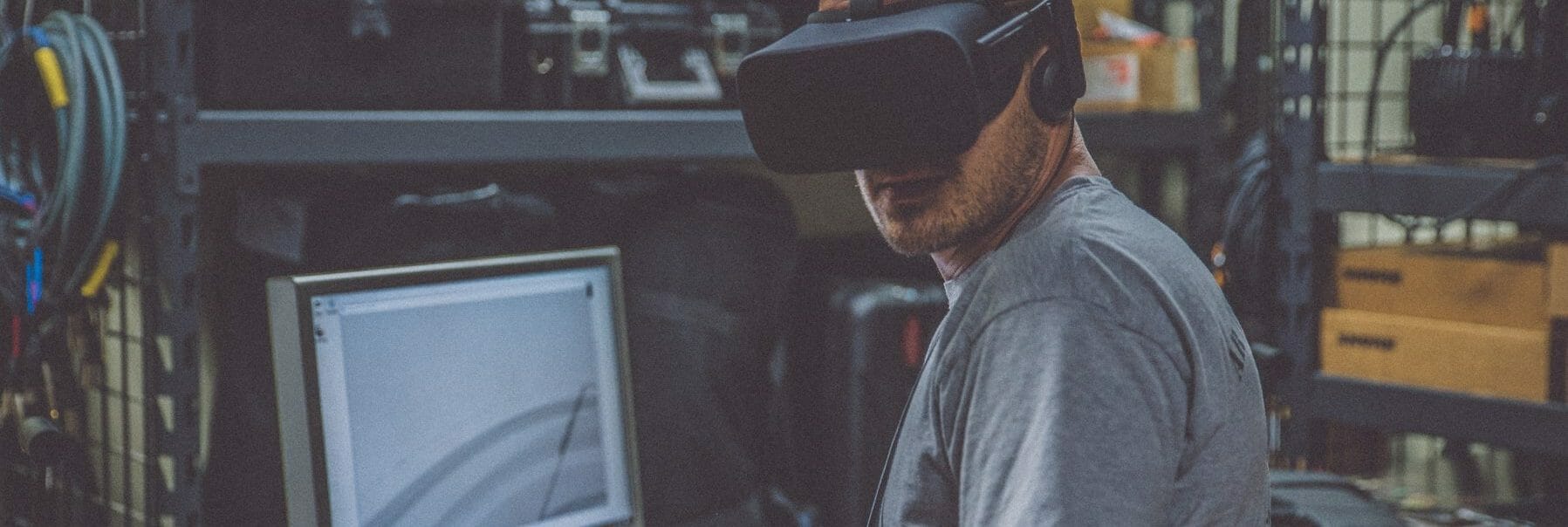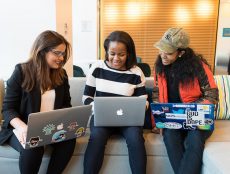
Articles
Editor’s Picks
Top 10
Trends in Corporate eLearning Part 2: How Companies Use Virtual Reality Learning
By Sherman Morrison
January 15, 2019
In the first article of this four-part series, Corporate eLearning Realities Part 1: VR, AR and MR in Learning and Training, I provided definitions of virtual reality, augmented reality and mixed reality along with hints of what they bring to the tasks for workplace learning and training programs. This second article of the series takes a closer look at how companies use virtual reality learning to impart skills and knowledge to employees for a variety of purposes. Each example is a real-world mini case-study to reveal the range of potential applications, what they replace, and their effectiveness.
Common Sense in How Companies Use Virtual Reality Learning
As mentioned in part one of this series, developing and implementing a full-blown virtual reality environment is neither easy nor is it inexpensive. Learning professionals will need to increase their technological acumen in order to properly sort out what’s worth pursuing and what is not. An immersive VR version of a company’s offices for an onboarding workspace orientation experience would be a clear case of overkill. Then again, taking a walk around the workplace using an AR app with mobile device in hand that gives information about what is being seen via the device’s camera might be totally worth it. Learning professionals don’t need to know how to create VR applications, but they will need to know enough about what’s involved to make decisions about specific project ideas. When is a VR solution potentially the best solution? Here are the factors to consider:
- Rarity: If the knowledge needed is very rare, VR might be the best solution, such as diagnosing or treating extremely rare illnesses. By their very definition, real-world learning opportunities to study such illnesses are few and far between.
- Observability: When you can’t see what’s happening at a molecular level with the naked eye, creating a virtual environment where you can blow it up to human-scale in order to explore what’s happening in microscopic environments can bring a whole new perspective and understanding of all kinds of phenomena.
- Replicability: When the experience or skill needed is something that is just too expensive to repeat over and over again in the real world, recreating it in a VR environment can actually save resources over time after the initial investment to create it.
- Danger: Think of all the truly dangerous real-world experiences that are dealt with by first responders, law enforcement, soldiers or any other jobs that involve significant risk to life and limb. Real-world training can only go so far when you get to the point that failing a training exercise proves fatal – but in the VR environment you can engage in the dangerous activity as many times as needed until you get it right, and no one gets hurt.
- Complexity: Gaining the knowledge needed is one thing, but applying it complicated actions or synthesizing it with other knowledge or making adjustments based on context can happen more readily in the VR environment.

Keeping all of that in mind, what follows are real-world examples of how companies use virtual reality learning:
Walmart Using Virtual Reality for Training Associates
How do you train a new associate or manager on what it’s like in a Walmart store on Black Friday? Sure, you can explain it. You can show them a video. You can talk them through how to interact with customers the right way. You can even engage in role-playing. But if you want them to really experience it, drop them into a VR Black Friday and voila – they will very quickly get it.
This qualifies as a great example of applying VR in a retail environment. Black Friday is arguably the single most important work day for the retail giant that has 1.5 million associates in the US alone, but it only happens once a year, which makes it an instance of the “rare” factor mentioned above. It’s not something that can be easily replicated for training purposes. And let’s face it, the customer interactions that can happen in a Walmart on a Black Friday can certainly become surprisingly complex. But it’s not just the rare events like Black Friday that Walmart is leveraging with VR training – it’s also making use of it for many of the day-to-day scenarios with which associates must contend. With the VR trainings, new associates can learn all the ins and outs of handling a wide variety of difficult situations, including making plenty of mistakes along the way, without ever disrupting a real-world location’s shoppers.
Is it effective? Walmart’s initial results were good enough to convince the company it needed to incorporate the VR trainings into all 200 of its Walmart Academy sites that collectively train 140,000 new associates each year. And now the company will also be shipping out multiple Oculus Go VR headsets to all US stores in order to train another million existing associates with Academy content. Both confidence and retention are getting a boost, and test scores among associates who have gone through VR training are seeing improvements in the 10-15% range.
Boeing Uses VR Training for Engineers Who Wire Airplanes
Building airplanes is big business for Boeing, but it’s also a highly complex undertaking where errors can have catastrophic results. One of the many aspects that have to be exactly right is the wiring in a plane. There are huge lengths of wire laid throughout a plane, and each connection has to be 100% accurate. If not, there will likely be a failure in testing, which then results in a very costly delay while the problem is identified and remedied. By creating a VR recreation of the plane, engineers get to really see what has to be done to get the wiring correct, which has greatly reduced the amount of time it takes to train new engineers in the process. In general, Boeing is aiming to reduce the overall training time for all its new engineers by 75%.
KFC Uses VR to Accelerate its Secret Recipe Training
Kentucky Fried Chicken, now known as KFC, is the world’s leading fast food fried chicken franchise with nearly 17,000 locations around the planet. That means there are a lot of employees who need to be trained in how to prepare the chicken with the secret recipe of 11 herbs and spices created by “Colonel” Harland Sanders all the way back in 1940. The company recently rolled out a VR training program to teach the process, and the VR version has reduced training time from 25 minutes per person to just 10 minutes. That may not sound very significant until you realize the scale at which a chain like this is operating. Even minor adjustments to such basic tasks can have a huge cumulative effect in terms of reducing costs and thereby boosting profit margins, which is always the Holy Grail in large fast food chains. A bonus for new cooks is that the VR training is game-based as a kind of escape room scenario that makes it fun as well.
Linde Uses VR for Training in Dangerous Work
Linde is a company that supplies industrial gases, which means it is delivering hazardous chemicals to thousands of locations day in and day out. Some of the gases are highly flammable while others might be kept at extremely cold temperatures (-320° F) that would instantly freeze any exposed skin. How do you train new drivers without risking injury or death from the training itself? The answer, of course, is VR training. In the VR environment, trainees can go through as many repetitions as are needed to prepare them for their first real-world deliveries. These VR trainings don’t just give them the skills they need, but also innately impart to them an understanding of the underlying concepts that allow them to react to all kinds of unexpected situations that could come up on the job.
With this wider understanding of how companies use virtual reality learning to teach employees in all kinds of businesses the skills and knowledge they need, the next article in this four-part series about corporate eLearning realities will examine the ways in which various businesses are utilizing augmented reality in their workplace learning and training programs.
Featured Image: Eddie Kopp, Unsplash.









[…] Continue reading the article here […]